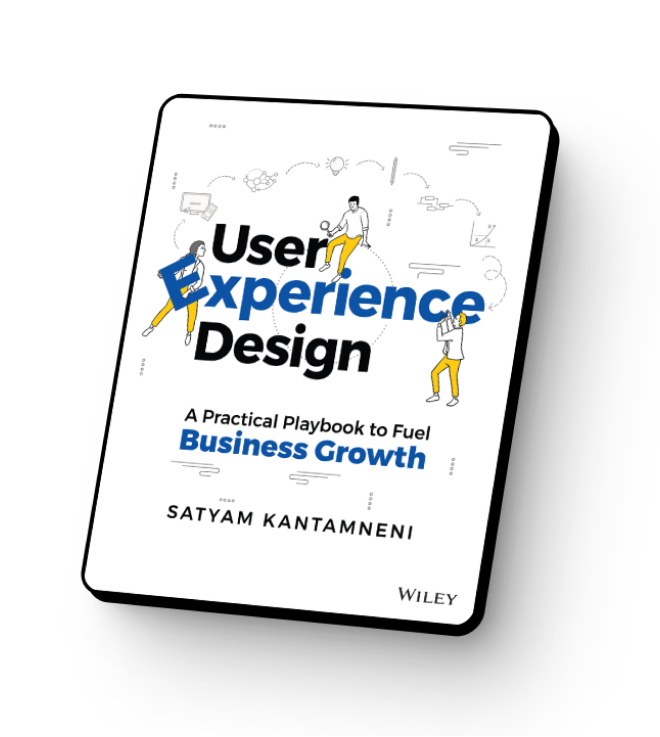“We’ve talked to users, so why is my product still not performing?”
That’s one of the most frequent questions our client partners ask us. Even though most collect and assess user insights in forms like customer feedback and usability studies, they still can end up with underperforming products.
Watching a product fall short of its intended purpose is frustrating when you feel like you’ve checked all the boxes and followed all the crucial steps. And you may be on the right track.
But following the right process in the right sequence is critical to take your product from “good enough” to leading a market.
This is the status quo product development process at most companies:
If this is what your product development process looks like, you’re not alone.
| Product Development Phase | What it entails |
| Product strategy | Insight gathered from customer feedback and market research is used to guide early business and design decisions. Requirements are developed and then socialized to the appropriate cross-functional teams for execution. |
| Design Execution | Design teams create prototypes based on known insights and requirements from product leads. |
| Development | Final prototypes are handed off from design to engineering teams for development. A Design or Quality Assurance team may inspect the designs to discover potential bugs or discrepancies from the original design. |
| Usability Studies | If the organization has a research department, studies are run with completed prototypes or live products through usability studies, design evaluations, and pilot testing to gain an initial understanding of user sentiments and pertinent issues. Opportunities for improvements identified on prototypes or critical issues in a live product are implemented immediately. Future product updates can address non-critical issues or more significant changes to live products. |
| Post-launch | Feedback is continuously gathered through channels like customer support and shared with business leaders and product teams. The product teams will take necessary action based on the impact and severity of the feedback received. |
This cycle intends to lay a foundation for success, with continuous insights fueling product growth.
The problem is the types of insights generated are primarily reactions toward an existing product. And relying on insights from the above user validation methods can make incremental changes to a current product; however, it won’t generate the insights needed to become a category leader.
Why asking the right questions at the right time can make or break your outcomes
Equipping your product and design teams with the right insights when they matter the most is the key to success, and no – it isn’t rocket science.
But sometimes, we need to pay more attention to the importance of taking these steps in the right order.
Here are a few examples:
- Gathering insights on underserved needs can inform product strategy and provide a foundation for design decisions throughout the development lifecycle.
- Gaining insights into the quality of an experience with a design prototype can prevent future development churn by addressing the issues before the concept hand-off to engineering.
Establishing a comprehensive process that generates the right types of insight to guide each stage of the process will derisk decision-making and directly improve the performance of your product.
If done correctly, implementing the right product development process can support your organization on its road to success in three key ways:
- Increase the certainty you are addressing the problems that drive the most value to your user.
- Provide clear guidance on differentiating yourself from your competitors.
- Transform your organization’s culture to become user-first rather than feature/functionality-first by increasing user empathy.
Follow this process to develop a competitive, high-value, user-first product:
1. Ensure you’re solving the right problem by validating your ideas or concepts, even before there is a design
Why do it? User validation research is often associated with usability studies or customer surveys, where user feedback on a design or product informs minor improvements before its launch.
Here’s the challenge: since these UX research methods are often conducted later in the development life cycle, you’ll only gather insight into whether a solution was designed the right way.
Said differently, those insights can’t shed light on whether the right problem was solved.
One unique aspect of user validation is the research stimuli don’t have to be fully designed and developed products. They can be design prototypes, a list of ideas, or hypotheses.
Running an early round of user validation ensures you are solving the right problem and also helps you save costly engineering resources.
What does it look like in practice? A client came to us for help because – even though prospective customers were signing up for their trial – engagement was extremely low.
They’d received feedback that trial users had been struggling with certain aspects of the product. In response, they were making incremental changes to address the issues.
However, these insights needed to be more comprehensive to provide direction on increasing engagement and adoption in a way that could move the needle.
With our guidance, they added user validation studies to the beginning of their development life cycle. We partnered with them to establish an experience benchmark through secondary research, collating hypotheses, and validating the hypothesis with users.
This helped the product and marketing teams narrow down the right direction without additional internal efforts.
2. Prioritize user validation insights to derisk decision-making
Why do it? Before our engagement, the same client relied heavily on internal SME knowledge for technical expertise and feedback from teams interacting with end-users.
Internal teams like Sales and Customer Success provided insights from conversations with prospective and existing customers on the live product as building blocks for their roadmaps.
While they could make incremental changes to improve their product and experience based on what end-users shared, the insights gathered were limited to what the users had experienced within the product rather than uncovering underserved needs.
Since the feedback was given on a live product, applying the changes often required design and engineering resources.
A successful process uses user validation research to ensure the right insights are gathered when needed.
This empowers organizations to prompt the right kind of feedback when it’s the most beneficial rather than relying on prospective and existing customers to share feedback on their own. Equipping an organization with proper guidance will derisk decision-making across the entire development process.
What does it look like in practice? After completing the design prototypes, we implemented a round of user validation. The result? The client’s design team was able to make necessary fixes before committing any engineering effort, rather than finding out about issues after development.
The cost of fixing mistakes is significantly lower in design than in development, so this was both a time-and-cost win.
3. Identify your users’ needs and what they value the most
Why do it? Many of our clients come to us after realizing that while they understand their market’s technical direction, they are missing a key piece of information: They don’t know what their users value the most.
As a result, some cannot make educated decisions on underserved needs to differentiate their product and delight their users.
A successful user-centric product and experience require a deep understanding of the end-user to drive decision-making throughout the design lifecycle. User validation only provides insights based on the designs presented to the user.
So, waiting to run this research at the end of the development lifecycle can develop a false sense of security and increase the risk of investing time and resources in the wrong direction.
Moreover, relying on user validation alone to provide sufficient insights can be just as detrimental to a product’s success. Including user validation at the product strategy and design execution stages will provide early insights into the potential value of the proposed solution and allow product teams to pivot before development.
What does it look like in practice? Apple is a market leader whose success was built and maintained thanks to its investment in a robust portfolio of insights. While most of its competitors in the early 2000s were busy validating their products, Apple led with formative research to discover and validate consumer needs.
They have produced top-rated products like the iPhone and continue to adjust and innovate based on the evolving customer needs extracted through research across their product development lifecycle.
Implementing a complete research program, which gathers formative, summative, and sensorial research across the design and development lifecycle, will ensure that you are solving the right problems properly.
And it will enable you to measure the quality of your solution on an ongoing basis (find out what type of research you need in this article).
4. Socialize insights across the organization to build collective empathy and guide aligned decision-making
Why do it? The benefits of having the right user insights continue beyond the design, product, and engineering teams.
User insights can be shared and leveraged across all departments in the organization to build user empathy, guide decision-making, and improve cohesion.
What does it look like in practice? Airbnb is a great example of how collective empathy can impact an organization’s performance. The organization invested heavily in engineering and development in its early days, but it quickly realized there were problems that could only be solved by going to its users to discover and validate their needs.
They believe “great ideas can come from anywhere,” and they have created a unified user experience by intentionally collaborating across non-overlapping areas of the business.
Equipping the entire business with user insights will ensure your product drives value, your organization is optimizing its resources, and you’re on track to being a proactive leader rather than a reactive follower.
Leveraging user validation across the entire design development lifecycle can establish the foundation for a comprehensive portfolio of insights, providing you with the right insights at the right times.
We have partnered with clients to implement user validation research across strategic and product life cycles.
In addition, we’ve guided our clients as they build out a research program internally, train team members, and support their teams with research studies when they have capacity constraints.
Whether you are short on resources, capacity, or know-how, we would be more than happy to understand your needs and share our knowledge so you can be successful.



